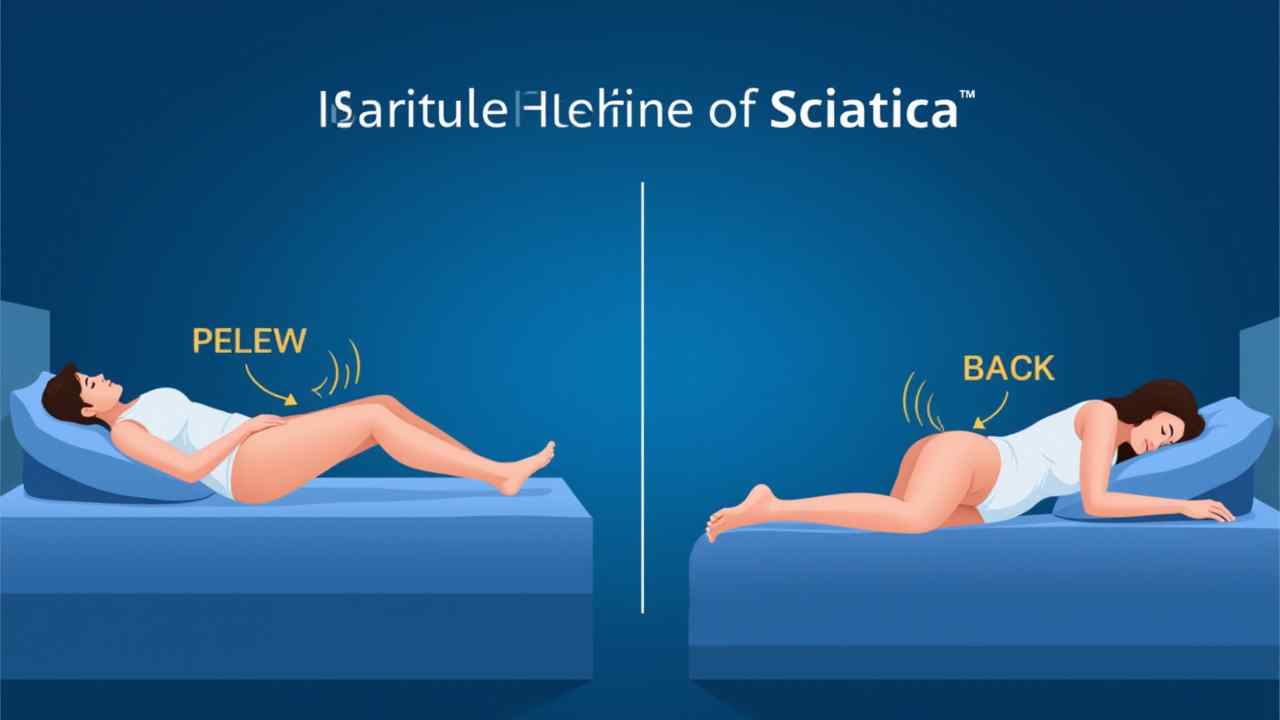
🛌 How to Sleep with Sciatica Pain (A PT's Guide to a Pain-Free Night)
🛌 How to Sleep with Sciatica Pain (A Guide to a Pain-Free Night) 🛌
❗ Important Medical Information: Sciatica is a type of nerve pain that requires a proper diagnosis from a doctor or physical therapist. This guide provides general tips for pain management during sleep and is not a substitute for a personalized medical treatment plan.
Sciatica can be a debilitating condition. The shooting pain that radiates from your lower back down your leg can make finding a comfortable position feel impossible. For many people, the pain gets significantly worse at night, ruining their sleep.
So, how do you sleep with sciatica pain? The good news is that simple changes to your sleeping posture can provide enormous relief. The key is to use pillows strategically to support your spine. This guide will show you the best techniques. ✅
🤔 What is the Main Goal of Sleeping with Sciatica?
The number one goal is to maintain a neutral spinal alignment. Sciatica pain is often caused by a compressed nerve root in your lower back. Any position that twists or bends your lumbar spine can increase this pressure and make the pain worse.
The ideal sleeping position keeps your spine in a straight, natural line from your head down to your hips. Pillows are the most important tool you have. They help to support your body and prevent it from falling into a painful, misaligned position.
What is the Best Sleeping Position for Sciatica?
There are a few positions that are recommended for relieving sciatic nerve pressure. The "best" one is the one that feels most comfortable for you. Do not be afraid to experiment with different pillow placements. Here are the top choices.
How should you sleep on your side?
This is a great position, but you must do it correctly. First, try to sleep on the side that is not in pain. This takes direct pressure off the sore area. The next step is the most important trick for how to sleep with sciatica pain.
You must place a firm pillow between your knees. This prevents your top leg from sliding forward and twisting your pelvis. This simple pillow placement keeps your hips, pelvis, and spine in a perfectly straight line. It is a game-changing adjustment.
How should you sleep in the fetal position?
This is a variation of side sleeping. Gently curl your body into a fetal position by drawing your knees up towards your chest. Do not curl up too tightly. This position can help to open up the spaces between your vertebrae. This may give the pinched nerve root more room and relieve pressure.
How should you sleep on your back?
Sleeping on your back is another excellent way to keep your spine straight. To make this position effective for sciatica, you need to add support. Place a pillow under your knees. This will elevate your legs slightly. This helps to maintain the natural curve of your lower back. It also relaxes your hip flexors, which can reduce tension on the lumbar spine.
🚫 What is the Worst Sleeping Position for Sciatica?
The worst position for sciatica is sleeping on your stomach. This position flattens the natural curve of your spine. It can also cause your lower back to arch excessively. It forces your head to be turned to one side. This twists your entire spine out of alignment. You should avoid this position at all costs.
If you are struggling with sciatica, these simple positional changes can offer significant relief. They will help you get the restorative sleep you need to heal. For a long-term solution, always work with a doctor or physical therapist. They can diagnose the root cause of your pain and create a comprehensive treatment plan. 🩺